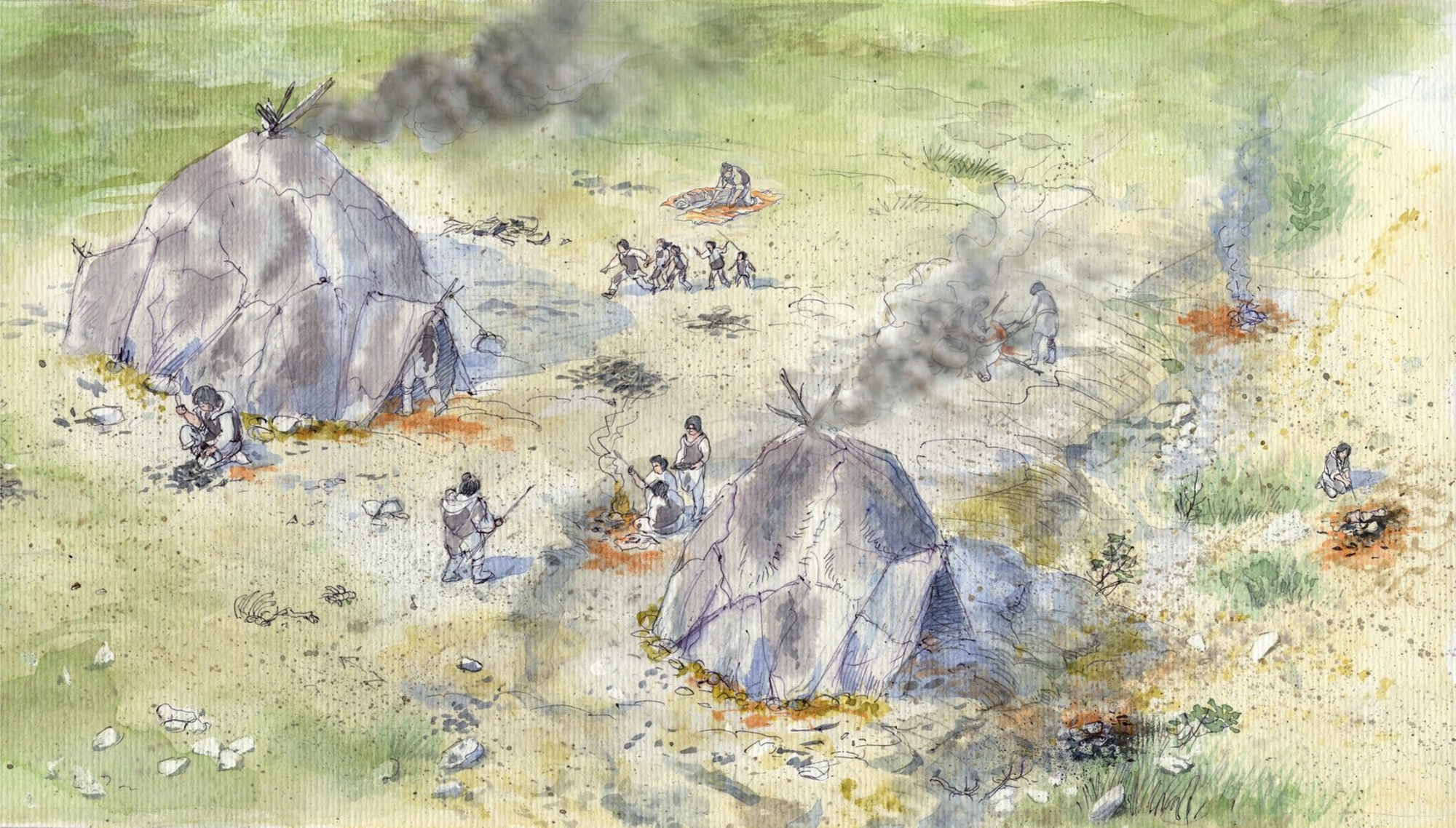
- Home
- The Magdalenians in their camps
- The camp of two related families
- A glimpse of a Magdalenian community
Unequal exchange between the habitations
By refitting flint we can understand how cores, and particularly blades, circulated between the different groups on the camp. Exchanges between habitations were frequent, but there was a clear imbalance in the circulation of blades, U5 providing more than P15.
Two families with a different status
The very elaborate architecture of habitation U5 and its concentration of knapped flint reveal a high level of technical skill, which lead us to think that the family occupying this tent enjoyed a special status within the camp. The hearth at U5 was where the most experienced knappers worked on behalf of the whole community and hunters prepared their expeditions. From an economic point of view, the family that lived in P15 played only a secondary role. Several reasons might explain their lower economic contribution to the group, including that they were a “young” family, consisting of only a young female adult and children, or that there were no experienced adults in P15.
A possible reorganisation of the group during a stay
As is already suggested by the scale of the remains discovered in and around each habitation, refits also show that the two dwellings were occupied for different lengths of time. U5 was occupied for a long time, perhaps for several seasons, while P15 was abandoned mid-stay. The departure of the family from P15 could suggest the group was reorganised at some point during their stay. Indeed, traditional nomadic societies are known for their flexible attitude to association, with families dispersing and reuniting over the year.

